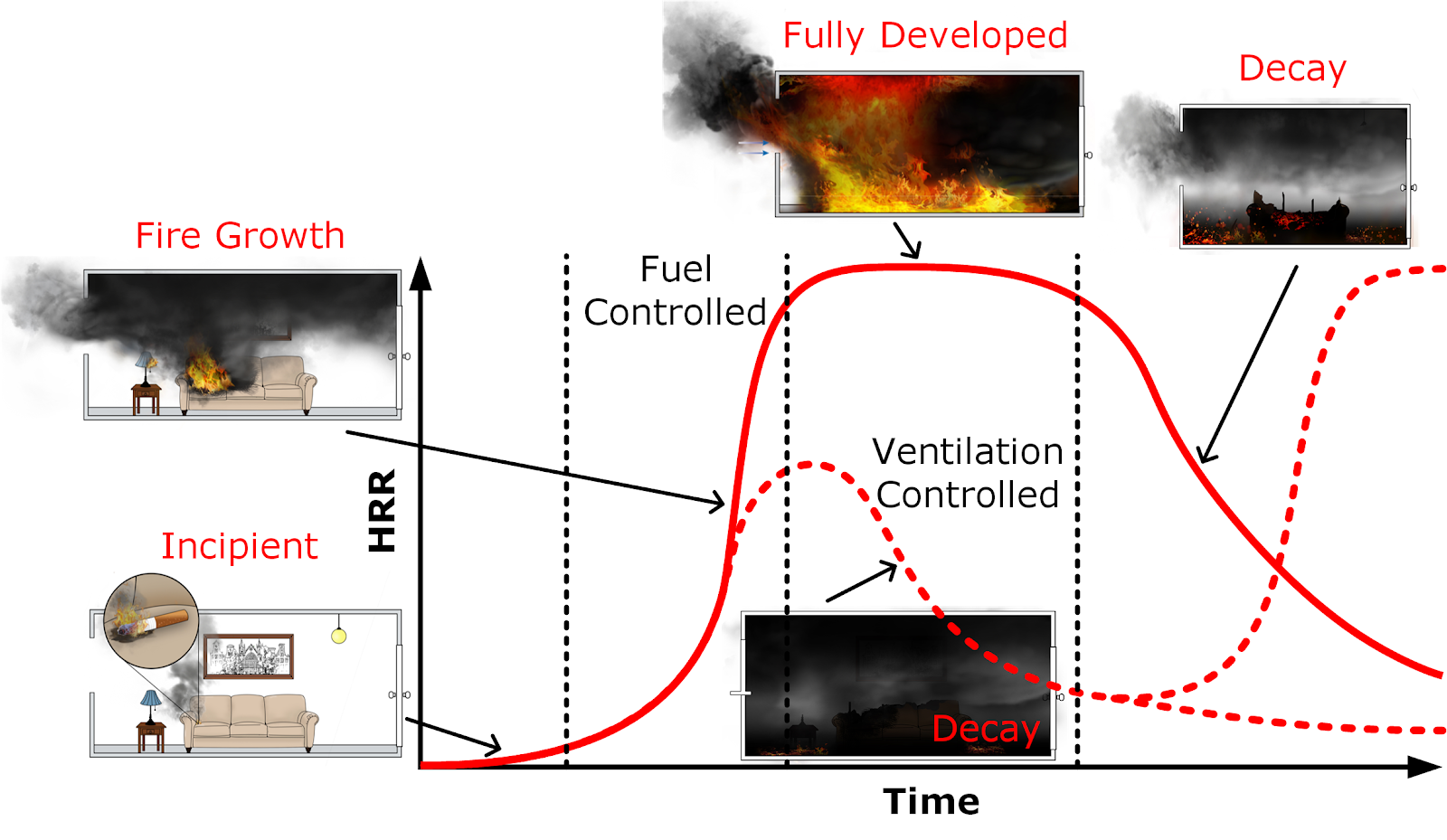Fuel- vs. Ventilation-Controlled Fires
After ignition, a fire grows and develops according to the available fuel and the ventilation characteristics within the enclosure or structure. The temperature rise within the enclosure depends on the HRR; the area and heights of any openings; the total surface area of walls and ceilings in the room; the geometry of enclosure; the thermal properties of enclosure linings; and whether the construction is combustible or non-combustible. The fire may be either fuel-controlled or ventilation-controlled, and the transition between these two will depend on the circumstances, as is shown schematically in Figure 13.

As indicated by the solid line in Figure 13, if there is sufficient air to sustain the growth of the fire, it will steadily increase in size until it undergoes a transition into the fully developed state of full room involvement. In this situation, the early HRR and fire growth rates are controlled by the characteristics and availability of vapour from the fuel. This is referred to as a fuel-controlled fire, since the rate of burning depends on how much fuel vapour can be produced and mixed with the readily available air in each increment in time. Early-stage fires are most often fuel-controlled, and will continue to burn as long as sufficient fuel and oxygen are present.
Fires begin as fuel-controlled, and at some point within the fire growth, so much fuel vapour is produced that the HRR and growth become limited by the availability of oxygen. The fire then becomes a ventilation-controlled fire. Whether or not a fire will transition into a ventilation-controlled state depends on the fuel load as well as the size of both the compartment and ventilation openings.
As a fire becomes ventilation-controlled, its rate of growth will decrease relative to that of a well-ventilated fire. As this happens, the HRR will also decrease and the fire may decay and extinguish itself if no additional air is provided. Extinguishment can occur if oxygen levels in the enclosure fall below the range of 10-15%.
If the fire is not extinguished, subsequent fire development will depend on: the stage of fire development up to the point at which the fire became ventilation-limited; the temperatures of the fire gases when any additional air is added to the enclosure; and the size of openings that are made when any air is subsequently added to the enclosure.
As a fire transitions to a ventilation-controlled state, the overall environment can be hot and very dangerous. Even if the HRR decreases, there is already hot smoke in the enclosure. Thus, the built-up heat in the compartment can still support the pyrolysis of additional fuel so that a volume of flammables builds up in the enclosure. If the ventilation to the enclosure is then increased following a period of ventilation-controlled fire development, one of several rapidly occurring events, herein referred to as "rapid fire developments" (for example smoke ignition, flashover or backdraft), can be initiated. These eventualities are extremely dangerous and are discussed further in Section 3.4.